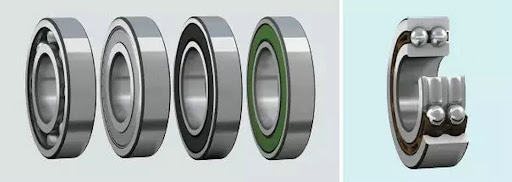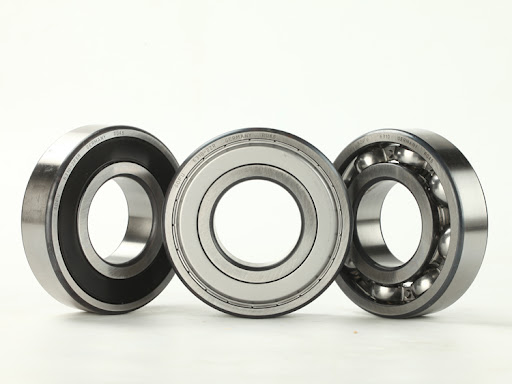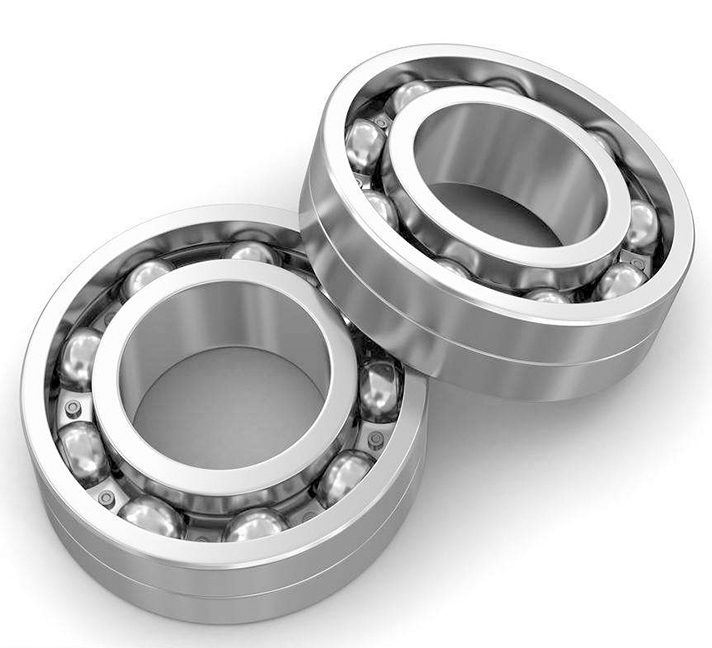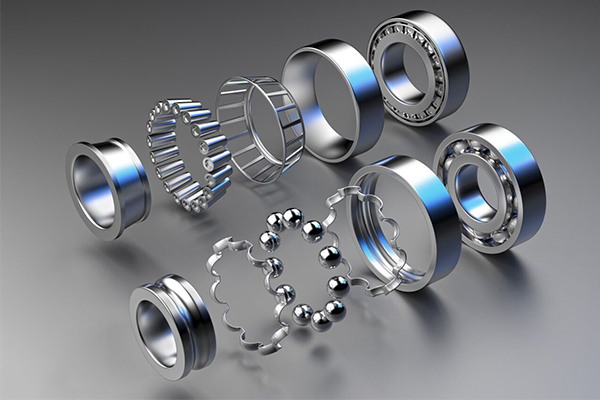Newsroom
How to avoid the harm of noise to bearings?
2024-11-27As a crucial component in mechanical systems, deep groove ball bearings are widely used in various industrial equipment, transportation vehicles, and household appliances. However, deep groove ball bearing noise is often a prominent issue that plagues equipment performance, operational stability, and user experience. Conducting an in-depth analysis of it helps to accurately identify the root cause of the noise, so as to take effective solutions and ensure the normal and efficient operation of the equipment.
Causes of Deep Groove Ball Bearing Noise
1. Defects in manufacturing processes
The surface roughness of rolling elements fails to meet the standard: During the machining process, if the grinding and polishing techniques for rolling elements are imperfect, there will be slight irregularities on their surfaces. When the bearing rotates, the contact between the rolling elements and the inner and outer raceways is no longer in an ideally smooth state. This irregular contact will trigger high-frequency vibrations and produce sharp noises.
Roundness errors of inner and outer raceways: The wear of manufacturing molds and the insufficient precision of processing equipment may cause the roundness of the inner and outer raceways to deviate from the design standards. As a result, when the rolling elements roll in the raceways, the force they bear is uneven, and the periodic force changes prompt the deep groove ball bearing to generate vibration noises, with the noise frequency usually related to the rotational frequency of the bearing. 
2. Improper assembly
Unreasonable preload: An excessive preload will greatly increase the friction between the various components inside the bearing, not only accelerating wear but also generating continuous friction noises due to excessive compression. On the other hand, an insufficient preload cannot guarantee the rigidity of the bearing, making the rolling elements prone to shaking during operation and colliding with the raceways to produce noises.
Eccentric installation: If there is a certain amount of eccentricity when installing the bearing onto the shaft or housing bore, the deep groove ball bearing will be subjected to additional radial or axial forces during rotation, resulting in uneven force on the rolling elements, triggering unbalanced vibrations and thus generating noises. These noises usually have obvious periodic characteristics.
3. Poor lubrication
Insufficient lubricant: When the bearing is operating at high speed, sufficient lubricant is required between the rolling elements and the raceways to form an oil film and reduce friction. When the amount of lubricant is insufficient, direct metal-to-metal contact increases, the friction coefficient rises, and dry friction noises are produced, typically manifested as harsh "squeaking" sounds.
Contaminated lubricant: Impurities such as dust and metal debris in the working environment mix into the lubricant, which will damage the integrity of the oil film and greatly reduce the lubrication effect. These impurities may also act as abrasive particles between the rolling elements and the raceways, aggravating wear and generating additional noises. The noises often show irregular fluctuating characteristics.
4. Abnormal loads
Overloading: When the actual load borne by the equipment exceeds the deep groove ball bearing's designed load capacity, each part of the deep groove ball bearing is under excessive pressure, prone to plastic deformation, and the contact state between the rolling elements and the raceways deteriorates, triggering intense vibration noises. In severe cases, it may even lead to premature bearing failure. 
Impact loads: In some equipment with intermittent working characteristics, such as punching machines and crushers, frequent impact loads will instantaneously exert huge forces on the bearings, causing the internal structure of the bearings to be impacted and vibrated, generating instantaneous high-intensity noises. Under such working conditions for a long time, the bearing's service life will be significantly shortened.
5. Bearing wear and fatigue
Normal wear: As the bearing is used over time, components such as rolling elements, the inner ring, and the outer ring will gradually wear, the raceway surfaces will become rough, and the clearances will increase. At this time, noises will be generated during operation due to the decline in the fitting accuracy between components. Generally, the noises will gradually increase as the wear degree deepens, and the tone tends to be dull. After bearing the alternating stress for a long time, the surface material of the bearing will show fatigue phenomena, with tiny spalling pits emerging. These spalling pits will disrupt the uniformity of rolling contact, trigger periodic impact vibrations, and produce noises with obvious pulse characteristics, usually indicating that the deep groove ball bearing is about to enter the failure stage. 
Measures to Solve Bearing Noise Problems
1. Optimize manufacturing processes
Adopt high-precision processing equipment and advanced grinding and polishing techniques, strictly control the surface roughness of rolling elements and raceways, and ensure that the machining accuracy meets the design requirements, reducing noises caused by manufacturing defects at the source. Regularly inspect and maintain manufacturing molds to guarantee the roundness accuracy of the inner and outer raceways, and at the same time, strengthen the control of raw material quality to improve the overall manufacturing quality of the bearings.
2. Standardize the assembly process
According to the type, size, and application conditions of the deep groove ball bearings, accurately calculate and apply an appropriate preload. Professional preload measurement tools can be used for detection to ensure the accuracy of installation.
When installing bearings, use high-precision installation tools and positioning devices to strictly control the amount of installation eccentricity and ensure the coaxiality of the bearing with the shaft and housing bore, reducing the additional forces and vibrations caused by improper assembly.
3. Strengthen lubrication management
Reasonably determine the type, grade, and filling amount of lubricants according to the working requirements of the deep groove ball bearings, establish a regular lubrication maintenance system, and replenish lubricants in a timely manner to ensure that the bearings operate in a good lubrication state.
Take effective sealing measures to prevent external impurities from entering the inside of the deep groove ball bearings, and regularly clean or replace the lubricants to ensure the purity of the lubricants and maintain good lubrication effects. 
4. Reasonably control loads
During the equipment design stage, accurately evaluate the working load, select bearings with appropriate load capacities, and reserve a certain safety margin to avoid overloading the bearings.
For equipment with impact loads, add buffer devices, such as springs and rubber pads, to reduce the impact on the bearings. At the same time, optimize the working process of the equipment to reduce the frequency and intensity of impacts.
5. Regular monitoring and maintenance
Establish a bearing operating status monitoring system, collect real-time operating data of the deep groove ball bearings through devices such as vibration sensors and acoustic sensors, and use data analysis techniques to detect early wear, fatigue, and other abnormal conditions of the bearings in a timely manner, issue early warnings, and take corresponding maintenance measures. Develop a regular maintenance plan, regularly disassemble, inspect, clean, and replace worn parts of the bearings, eliminate potential fault hazards in a timely manner, extend the service life of the bearings, and reduce the possibility of noise generation.
For more information, feel free to contact QIBR


